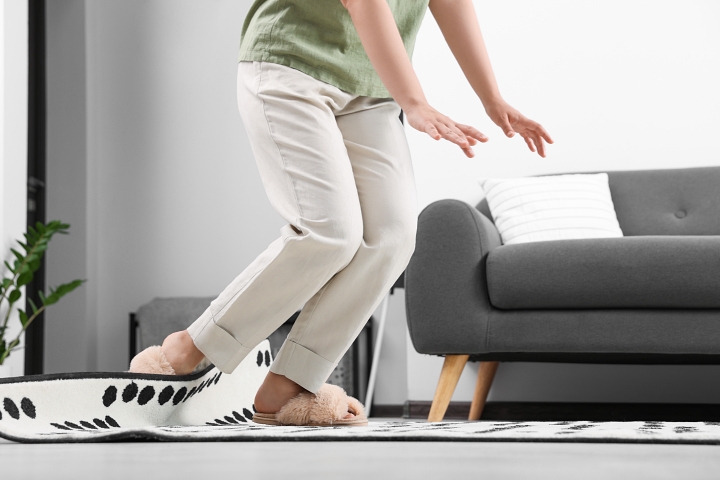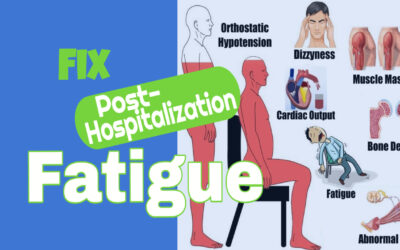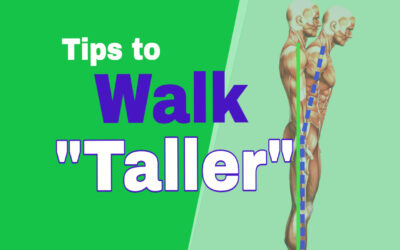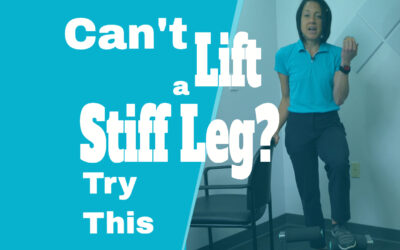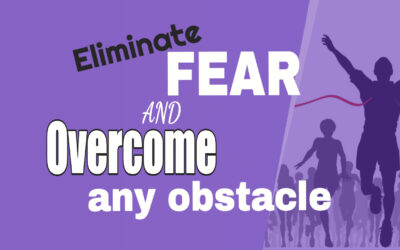Recovering from Stroke? Don’t Let These 7 Walking Mistakes Set You Back
Better Walking Starts by Avoiding These Mistakes
Recovering your walking ability after a stroke is an incredible accomplishment. You’ve put in the work. Strengthening exercises, therapy sessions, and daily practice. But what if your progress feels slower than expected? Or certain strategies just don’t feel quite right?
The truth is, some of the most common walking tips used in stroke rehab can unintentionally make things harder in the long run. Based on my professional experience working with stroke survivors, here are 7 mistakes that could be holding you back.
Mistake #1: Using a One-Handed Device on Your Strong Side
Example: A hemi-walker placed on your stronger arm right after a stroke.
It may seem logical to add stability to your strong side, but this often backfires, especially early in rehab. Devices like hemi-walkers have wide bases and offer so much support that they reinforce leaning and over-reliance on your strong side. This makes it harder to relearn balanced walking, and the habit is tough to unlearn.
What to try instead:
- Two caregivers for hand-held assistance, this encourages symmetry.
- A two-handed walker, possibly with your unaffected hand gently strapped to guide use of both sides.
- If compensations are already present, try placing the device in front of you and avoid keeping it off to the side.
- In the later stages of recovery, consider switching to a walking stick or trekking pole. These give support without encouraging one-sided leaning.
Mistake #2: Assuming Any AFO (Ankle-Foot Orthosis) Will Work
AFOs are often issued early in rehab, but not all are created equal. If your walking form or speed is off, the wrong AFO can make things worse, like stiffening your leg or limiting natural movement.
Real example: One client’s speed training hit a wall because her non-articulated AFO didn’t allow enough ankle flexibility. Once adjusted, her walking improved significantly.
What to try instead:
- Work closely with a physical therapist and orthotist to find an AFO tailored to your goals.
- If it’s not working, let them know. The best providers will try other solutions.
Mistake #3: Throwing Away Your AFO (Ankle Foot Orthosis) Too Soon
Sometimes a therapist says you “don’t need your AFO anymore.” While that may feel like progress, ditching it completely can lead to setbacks.
Here’s why: Spasticity never disappears fully. It’s always there in the background, and when compensations sneak back in, stiffness often follows.
What to try instead:
- Wean off your AFO gradually.
- Use it when walking in public or on long outings, but practice walking without it safely at home.
- Keep the AFO on hand. If spasticity returns, wear it for a week or two to reset.
Mistake #4: Focusing Too Much on Walking Quality Instead of Speed
This might sound counterintuitive, but speed and distance often matter more than form.
What to try instead:
- Prioritize speed and distance if you spend a lot of time in a wheelchair
- Work on a “normalized” walking form only if you’ve had no recent falls, and especially if it’s been years since your stroke.
Mistake #5: Focusing on “Heel-Toe” Cues
“Walk heel-toe” is common advice, but it might not be helping you.
Here’s the issue: Telling someone with spasticity to push off with their toe can actually increase toe pointing, delay foot clearance, and make foot drop worse.
What to try instead:
- Use the cue: “Heel, heel.” Eliminate “toe” from your vocabulary altogether.
- This gives your foot more time to clear the ground and helps prevent tripping.
Mistake #6: Only Strengthening Glutes
Many stroke survivors are told to “strengthen your glutes,” but stroke recovery is about retraining movement patterns, not just building muscle.
Why that matters: A stroke affects the brain’s ability to control movement, not the muscle’s ability to activate. For example, you might be able to squeeze your glute, but still struggle to stand on that leg without your hip dropping.
What to try instead:
- Focus on functional exercises like single-leg standing. Aim to hold your hip steady without dropping.
- Think movement, not just strength.
Mistake #7: “Don’t Look Down”
You’ve probably heard this one before, but it’s misleading. Looking down is normal and necessary for safe walking.
What’s actually dangerous is bending your head and shoulders forward to look at your feet.
What to try instead:
- Glance down with your eyes, not your head.
- Keep your neck upright and shoulders back.
- Look 6–10 feet ahead, but check the ground as needed, especially if you can’t fully feel your feet.
Final Thoughts
Stroke rehab is challenging, and there’s no one-size-fits-all solution. The key is understanding why something is being recommended, and making sure it truly supports your long-term goals.
If any of these tips resonated with you, try out the alternatives and see how they feel. Improving your walking isn’t just about strength or form. It’s about confidence, safety, and freedom.
How full is it??
"It's better to be an optimist who is sometimes wrong than a pessimist who is always right." -Unknown There is so much about the brain that we don't know. With that said, we know even less when it comes to an "injured brain". The good news is that we are learning...
How to become a “high achiever” in Neuro Rehab
There are "high achievers" in every industry. Including in neuro rehab. I consider these the "outliers". The ones who did what others couldn't. They recover more movement than expected. High achievers have a different gear. And truth be told, it is not one that I...
Neuro Rehab: Your Mind Is Your Superpower
"Only you can decide how far you will go". It is true. Your mind is your super power. There are many who may disagree with me on this, but after 20 years of helping people who have suffered life changing injuries, my conviction is unwavering. You either believe you...
Neuro Rehabilitation: The Choice To Try
“Every accomplishment starts with the decision to try.” – JFK Yes, deciding to try is a choice. In my opinion, it is the only choice. "Choosing to try" (that impossible skill) is hard. What if you fail? What if you put in the time and you don't get your desired...
Post Hospitalization Fatigue: What causes it and how to do fix it?
Do you ever feel so tired, you don't even want to get out of bed? If so, you wouldn't be alone. There is a really good reason for this. Fatigue is an extremely common problem after a hospitalization. And sometimes, it has nothing to do with the reason you were...
Fix a forward flexed posture
Do you ever have any "well-meaning" therapist tell you to stand up taller? 😬🤷🏻♀️ Well, you would not be alone. This is a pretty common problem that has a few different root causes. What causes a forward flexed posture? Weakness Weak hip muscles can potentially lead...
Can’t lift a stiff leg? Try this.
Can't lift a stiff leg? This is a pretty common problem that has a few different root causes. Knowing the root cause is the best way to identify the best exercises. What can make it difficult to lift a stiff leg? Weakness Weakness in the muscles that flex the hip...
Spasticity: Does fear make it worse?
Fear can be a crazy thing. And in some cases can be the root cause of spasticity. Yup, negative emotions can actually make spasticity worse. And in this case, I am going to lump situational fear and anxiety together. What I mean is that maybe you are walking really...
Neurologic Rehabilitation: Master Turn Steps
Turn steps are a critical part of walking without fear of falling. It is also a critical step in neurologic rehabilitation. To understand how to master a turn step it is good to understand all of the little movements that are involved: What movements are required for...
Discharged from therapy. What now?
So, you have been discharged from therapy. So, what now? For some, this is a positive step in the rehab process. Some will understand right away that this is progress. On the other hand, for others it can bring up all kinds of negative emotions. "Is my therapist mad...

